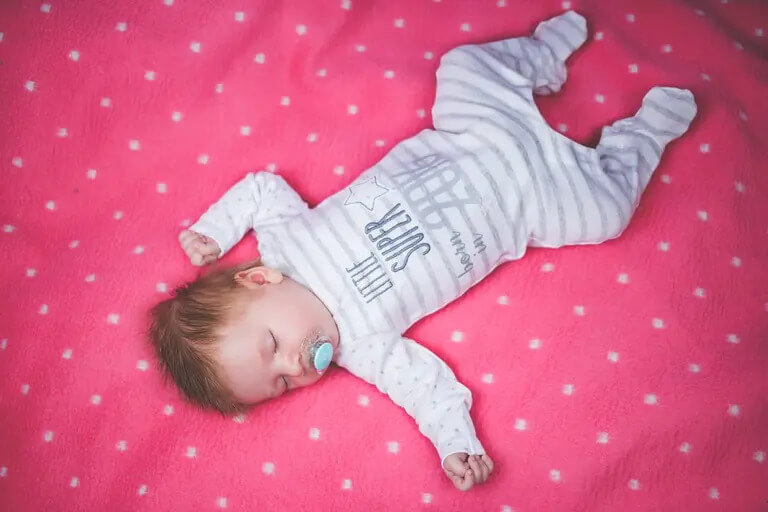
Are baby monitors recommended for the prevention of sudden infant death syndrome?
We already have a chapter on this website about Sudden Infant Death Syndrome (SIDS). And I have already shared my opinion about baby monitors there. But this chapter, here, will emphasize the ways in which we can prevent SIDS and will address the question most parents have – should they invest in a home baby monitor? And who are the babies that would benefit from it?
A quick reminder – what is Sudden Infant Death Syndrome and why does it happen?
Sudden Infant Death Syndrome (SIDS) is a sudden death of a healthy baby under the age of 1. It happens without any apparent reason, despite thorough post-mortem examinations.
Despite the drastic decrease in the frequency of this condition in the past, thanks to current safe sleep recommendations, the numbers have now remained quite stable in recent years.
Why does sudden infant death occur? A single cause has not been identified but there are several variables (that depend on us parents) that can reduce the risk and that is why I recommend you read the original chapter about this topic.
So, what about baby monitors? Do they save lives or can they help reduce this phenomenon?
Even though monitors (such as those that monitor breath, heart rate or oxygen saturations) seem promising – the current literature and joint statements clearly state that there is no scientific proof that these devices decrease the risk for sudden infant death in healthy babies.
Some of the cases sudden infant death in the past occurred while the babies were connected to monitors, and the death occurred despite that.
What does the world child health organization state about baby monitors?
Their recommendations are similar.
The American academy for children – do not use baby monitors as a means to prevent sudden infant death, as these have not been shown to help.
Canada and Australia – we recommend ensuring safe sleep practices, and do not recommend the use of baby monitors.
Additional medical organization have emphasized the risk that the feeling of false safety these monitors may provide, which leads to the disregarding of safe sleep practices.
So, if it can’t harm the baby why not use it anyway?
There are three main reasons for that:
1. False alarms coming from these monitors may lead to anxiety, dependence and may affect the parents’ quality of life. I see this very often. I know, however, that some parents claim the opposite is true – that these monitors reassure them.
2. There is a concern that parents will rely on the monitors and disregard the safe sleep practices.
3. Financial cost.
Are there situations where a baby monitor should be considered?
Yes.
There are certain groups of children where a baby monitor could, and should be considered – as long as it is recommended by a healthcare professional and is implemented with guidance:
1. Preterm babies with prolonged sleep apnea – especially when under 43 weeks corrected age.
2. Babies that have undergone a life-threatening episode such as BRUE or ALTE – especially if there was a need for resuscitation, or if the episode occurred at a very young age, or if there are feeding or breathing difficulties.
3. Infants with breathing disturbances during sleep due to peripheral or central causes – including babies with tracheostomies, mechanical ventilation or anatomical defects that require them to sleep on their abdomen (such as Pierre Robin syndrome or significant cleft palate).
4. Babies with respiratory or neurological illnesses that require oxygen or close monitoring
5. Parents that have experienced sudden infant death syndrome with a previous child – the use of the monitor may reduce anxiety in these situations, as long as the parents comprehend the limitations of the device.
Keep in mind that in these exceptional situations, the provider team will be aware of the need for a monitor and the risks entailed, and the parents will receive a referral already while hospitalized in the nursery or neonatal ICU.
In the above-mentioned situations, what else should be done in addition to the use of baby monitors?
Make sure the parents have undergone a tutorial for the use of the device
Make sure the family has access to continuance healthcare
Make sure the device is of high medical quality (and not an uncertified commercial device). I think this point may be confusing. The situations mentioned above, where a cardiorespiratory baby monitor is required, we are referring to a medical device and not the ones that can be bought from a baby store or off the internet.
Make sure the parents undergo an infant resuscitation course.
What is the length of time a home baby monitor should be used for in the above-mentioned situations?
Between 6 weeks to 3 months from the previous episode, and after that for a duration of time determined by the care provider.
So what kind of practices truly reduce SIDS?
The most important thing that you, as parents, can do is to make sure you reduce the risk factors, and these include:
• Laying the baby on their back for sleep.
• Using a hard mattress and avoiding the use of blankets or soft objects.
• To avoid smoking near the baby (also smoking during pregnancy has been associated with sudden infant death).
• Making sure the room is not warmer than 24 degrees.
• Encourage breastfeeding. Find out more about the benefits of breastfeeding here.
• Having the baby in the parents’ room (but not in their bed) until the age of 1.
• Using a soother during sleep may also reduce the risk.
In summary, I know that we want the best for our child and I know that baby monitors may contribute to your feeling of security. But it is just wrong to use them.
If you have a baby who is at risk, consult with your doctor about the right type of monitor for them. If you have a healthy baby, concentrate on the prevention of sudden infant death by practicing the above recommendations.
Save your money for more important things, for yourself and your baby.
For comments and questions, please register
